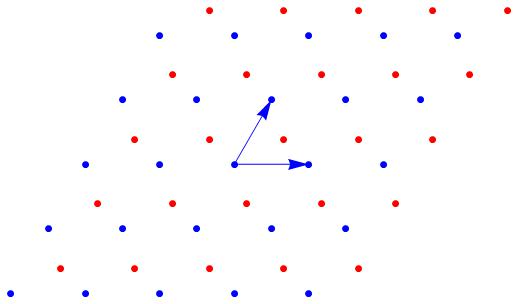
In the above image, I have a 2D crystal structure. The lattice vectors are described by:
a = {-1/2, -Sqrt[3]/2};
b = {1, 0};
and the location of atoms A and B are given by:
\[Tau][A] = {2/3, 1/3};
\[Tau][B] = {0, 0};
Now the problem I'm tasked with is to plot the locations of the atoms A and B, which I have done as seen above, where A is red and B is blue. I also have to plot the lattice vectors which I have done in blue arrows as seen above, and lastly I have to plot the basis vectors and this is where I don't know what to do.
I don't know what the basis vectors are. Googling has led me to discover that a lot of people use lattice vectors and basis vectors interchangeably, and overall, I have no clear definition to work with. Sometimes people say basis vectors are orthonormal, sometimes they need to be linear combinations with integers, sometimes with any real numbers.
I'm frustrated by the looseness with which all kinds of sources use these terms, and ultimately I don't have a clear reference to go with.
